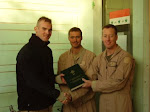“And his servants went out into the roads, and gathered all whom they found, both good and bad; and the marriage feast was filled with guests. Now the king went in to see the guests, and he saw there a man who had not on a wedding garment. And he said to him, ‘Friend, how did you come in here without a wedding garment?’ But he was speechless. Then the king said to the attendants, ‘Bind his hands and feet and cast him forth into the darkness outside, where there will be the weeping and the gnashing of teeth.’ For many are called, but few are chosen.” Matthew 22
“The Council of Trent summarizes the Catholic faith by declaring: "Because Christ our Redeemer said that it was truly his body that he was offering under the species of bread, it has always been the conviction of the Church of God, and this holy Council now declares again, that by the consecration of the bread and wine there takes place a change of the whole substance of the bread into the substance of the body of Christ our Lord and of the whole substance of the wine into the substance of his blood. This change the holy Catholic Church has fittingly and properly called transubstantiation."206
The CCC section on the Eucharist begins with number 1326. This teaching is given in number 1376, implying a secondary importance to this aspect of the Sacrament.
Every other teaching on the Eucharist follows from the dogma of transubstantiation, including the fact that a person not in a state of grace could not benefit from receive Our Lord truly present.
We are baptized and confirmed in a state of grace to remove the stain of original sin and to be fed with the Lord’s Body and Blood so as to grow in grace, “a fountain welling up to eternal life”.
A Recipe for Readiness – A Homily for the First Sunday of Advent
-
The first weeks of Advent focus more on the Lord’s second coming in glory
than on His first coming at Bethlehem. The gospel clearly states that we
must a...
5 days ago











No comments:
Post a Comment